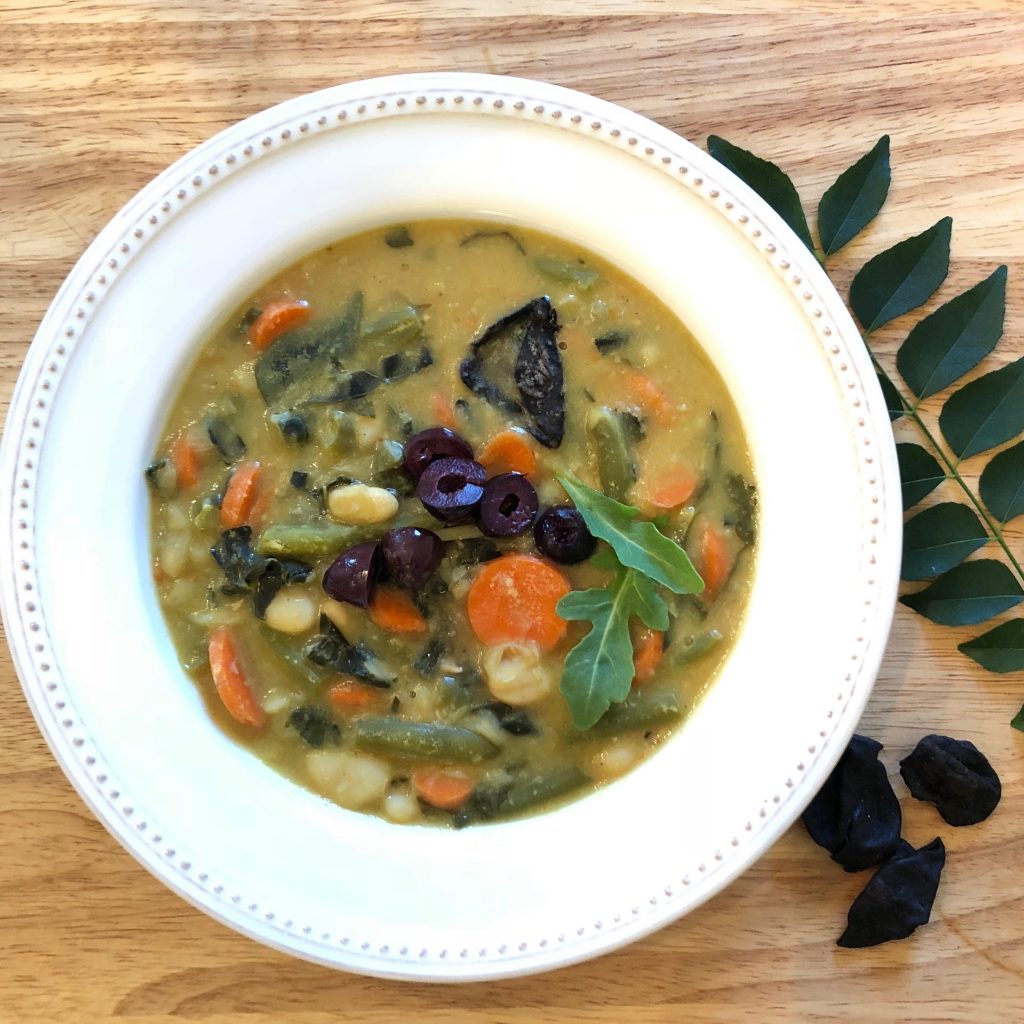Introducing Kokum with a Vegan White Bean Soup

It’s bitter cold in North Carolina and across much of the country as I write this blog—a perfect time for a wintry Vegan White Bean Soup. I’ve seasoned it with kokum as a way to introduce this fruit that is unfamiliar to most Americans, although it has been used in Ayurvedic cooking for millennia.
Dried kokum (also known as whole garcinia fruit or mangostein) is used in Indian cooking because of its sour taste. What makes kokum unusual is that, unlike other sour foods—lemon, lime, vinegar, tomato—kokum does not increase pitta’s fiery nature. If you have pitta problems and eat too much of these other sour foods, you can set yourself up for a lot of pitta maladies. These include acid indigestion and acid reflux as well as skin problems, headaches, and irritability. This doesn’t happen when you eat foods seasoned with kokum. In fact, kokum has a calming effect on pitta and on pitta ailments because its taste is more complex than sour alone. Rather, it is both a mixture of sour with sweet.
I’ve started using kokum in some soups and dals so we can enjoy its sour spike without the headache—figuratively and literally—of causing pitta problems around our house. Kokum lacks the prestige and loyal following of tomatoes or balsamic vinegar, but it’s serviceable when you’re avoiding those foods.
Finally, in this soup I’ve included one other ingredient you may not have come across yet: asafetida (sometimes spelled asafoetida), another favorite of Ayurvedic cooks. I’ll do a blog about asafetida another time, but in brief, it helps digest legumes, especially those pesky hard beans.
In any case, I think you’ll love this Vegan White Bean Soup during these cold winter nights—with or without kokum!
P.S. You can find kokum in Asian food markets and also online. Print



